Years ago, while working in the upper Arkansas River Valley as a small-town newspaper reporter and editor, I shared layout space with a number of other local newspapers. Our papers were owned by a small chain based in Salida, and every week, editors from Buena Vista, Fairplay and Leadville would descend upon the offices in Salida to put their papers to bed, get them printed and then haul them back up the hill to their respective communities.
One October, I was sharing layout space with the editor of the Leadville Herald-Democrat—she was busy producing the annual Winter Guide for Leadville and Lake County. The mood was a bit ominous as she printed sheets of 11-by-17 paper, ran them through the waxer and placed them on flats placed atop light boards (old-school stuff for all the former print folks out there). The flats boasted of powdery snow, ice castles, backcountry skiing atop Tennessee Pass and other locally popular outdoor activities—including ski joring (skiers pulled by a horse)— featuring heavily dressed folks sporting smiles amid blue-bird winter skies that make Colorado famous.
“This is just bullshit,” the editor said. “I feel like winter just ended in Leadville. I think I’m going to rename the guide this year to ‘Winter: Get Used to It.’”
Indeed, winter at 10,200 feet can be a bit oppressive. It starts early, sticks around late and by the time summer finally shows up, it’s damn near over.
But I’ve loved Leadville since I was a kid. Outside of town, nestled in a tight little valley between Mt. Elbert and Mt. Massive—Colorado’s two highest “fourteeners”—a sweet little high-country freestone stream tumbles downhill, meandering through willow-lined meadows and soaking into dark-water beaver ponds. This was where my grandfathers would take me, my brothers and my cousins to go fishing when were young.
And it’s also where I came to understand that the wrath of the Rockies, just as my colleague bemoaned years later, could strike at just about any time.
One year over Memorial Day weekend, my younger brothers and I piled into a beat up old Toyota Corolla that had absolutely no business traversing the gravel roads into our favorite little creek, and pitched a tent next to the water. The willows hadn’t even leafed out yet, and the aspens were just starting. The mountains were still shrouded in winter, but the creek ran clear, and that first day, we had a blast catching backcountry trout.
That night, we had a blazing fire, tipped back a few illegally obtained beers and fell into our sleeping bags, content to be out of the city and into what we knew to be the best of Colorado.
The next morning, my youngest brother and I awoke to a foot of new snow. Our middle brother, Brice, had climbed out of the tent and crawled into the car at some point during the night, where he started it up and ran the heater for hours, draining the vehicle of nearly all its fuel—the following Tuesday, we made it back to Leadville on fumes, and had to push the little 4-banger the last quarter of a mile to the gas station. Needless to say, Brice took a lot of grief that weekend, as we waited for the snow to melt and huddled together around the fire when we weren’t fishing. Even then, the time spent at altitude was memorable and irreplaceable.
Over the years, even as I moved around the country to northern California and then, eventually, eastern Idaho, Leadville has always been a special place for me. Almost two decades ago, as I set out to craft the most comprehensive newspaper series I ever undertook as a reporter—the saga defining the plight of cutthroat trout in the West—Leadville came into play.
Greenback cutthroat trout had been “rediscovered” some years before in a high-elevation trout stream above Fort Collins, and Colorado’s Division of Wildlife (now Colorado Parks and Wildlife) was working with federal fisheries managers to reintroduce greenbacks in their native range. It so happened that one of the introduction sites was above Leadville, and I convinced my editor in Idaho to let travel south to check in on the effort.
By this time, of course, a trip to Leadville meant a stop off at the Silver Dollar for a beer, a visit with old friends at the kitschy Golden Burro and a provision run to the fly shop. And, after catching a few reintroduced greenbacks (which, sadly, we later learned to be by hybridized with another Centennial State native—the Colorado River cutthroat trout), I venture back up to our little creek, and pitched a tent where, years before, my brothers and I endured a blizzard.
And, of course, that late June evening, it snowed.
Years before, my uncles and grandfather took me and my cousin, Nicholas, up to the creek to fish one day in July. I must have been about 17, and I was spending my summer in Colorado working on a landscaping crew. We fished all day, and then the grownups left me and Nicholas to camp at the creek while they went into Leadville and grabbed a motel room.
Nicholas and I woke up to frost on the tent, and we could see our breath. When we stepped outside to greet the day, the willows along the creek were white with hoarfrost. It was downright frigid, and the scenery looked absolutely Arctic.
It always seems that Leadville and winter have coincided over the years, even when winter is long over, or yet to officially arrive. At that elevation, though, winter doesn’t really stop. It just takes a quick leave of absence.
I last visited Leadville and the little creek almost two years ago. A fishing buddy and I had an epic day on the water, catching the rare Rocky Mountain slam—brown trout, rainbow trout, cutthroat trout and a mess of brookies.
That night, as we left the creek near the headwaters, afternoon thunderstorms dropped over the Divide and a cold wind set it. As we pulled into Leadville, it was snowing.
Winter. Get used to it.




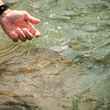




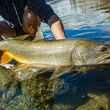
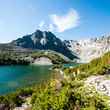


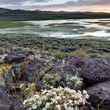




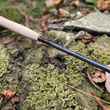
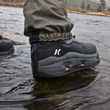



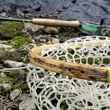
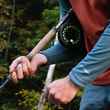



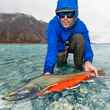
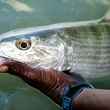
Comments